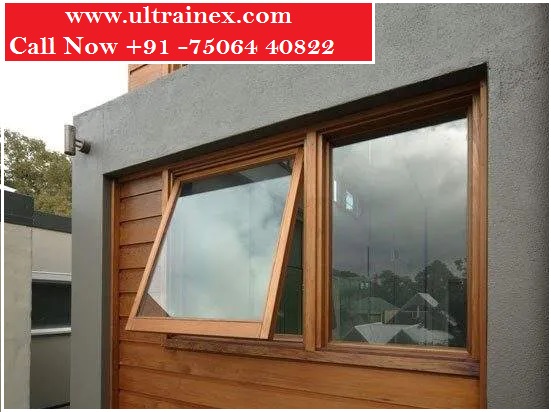Awning UPVC windows are hinged at the top and open outward, allowing for excellent ventilation even during light rain. These windows are popular for their functionality, energy efficiency, and modern aesthetics. Here’s a comprehensive guide to designing and servicing awning UPVC windows:

Design Considerations for Awning UPVC Windows
1. Determine the Window Dimensions
- Measure the Opening: Accurately measure the width and height of the window opening to ensure a proper fit.
- Standard or Custom Sizes: Standard sizes are cost-effective, but custom sizes can be created to fit specific openings.
2. Frame Style Selection
- Frame Profile: Choose a frame profile that matches the architectural style of the building. Options include chamfered, sculptured, or flush profiles.
- Color and Finish: UPVC frames come in various colors and finishes, including white, grey, brown, and wood grain.
3. Glazing Options
- Single or Double Glazing: Double glazing is preferred for better insulation and noise reduction. Triple glazing can be considered for even higher energy efficiency.
- Glass Type: Options include clear glass, tinted glass, laminated glass, and low-emissivity (Low-E) glass for improved thermal performance.
4. Energy Efficiency
- Thermal Insulation: Look for windows with high energy ratings. UPVC is a good insulator, and when combined with appropriate glazing, it enhances thermal performance.
- Seals and Gaskets: Ensure high-quality seals and gaskets to prevent air leakage and improve energy efficiency.
5. Hardware and Operation
- Hinges and Arms: Use corrosion-resistant hinges and arms for durability. Stainless steel or high-quality coated metals are recommended.
- Handles and Locks: Choose easy-to-operate handles and secure locking mechanisms to ensure safety and ease of use.
6. Ventilation and Weatherproofing
- Ventilation Control: Design the window to provide maximum ventilation when open, while ensuring it seals effectively when closed to prevent drafts.
- Weather Stripping: Incorporate effective weather stripping to prevent water ingress during rain.
7. Security Features
- Reinforced Frames: Ensure the UPVC frame is reinforced with galvanized steel for added strength and security.
- Secure Locking Mechanisms: Use robust locking systems to enhance security and prevent unauthorized access.
8. Compliance and Certification
- Building Regulations: Ensure the design complies with local building regulations and standards for safety, energy efficiency, and performance.
- Certifications: Look for windows with relevant certifications, such as CE marking, indicating compliance with European standards, or other local certifications.
Example Designs
Basic Awning UPVC Window
- Dimensions: 1200mm x 600mm
- Frame Profile: Chamfered, white finish
- Glazing: Double glazed, clear Low-E glass
- Hardware: Stainless steel hinges, manual handle
- Ventilation: High airflow when open
- Security: Reinforced frame, secure locking system
Decorative Awning UPVC Window
- Dimensions: 1500mm x 700mm
- Frame Profile: Sculptured, wood grain finish
- Glazing: Triple glazed, tinted glass
- Hardware: Coated metal hinges, automated handle
- Ventilation: Controlled airflow with enhanced weatherproofing
- Security: Reinforced frame, advanced locking system
